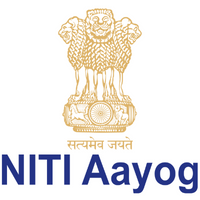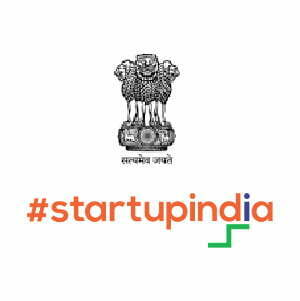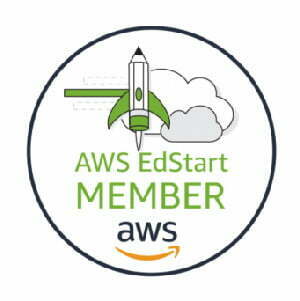In this session, we have Dr. Himanshu Puri (Chief Advisor, GrabGuidance), as a speaker. He will be giving you some valuable points on how to validate your startup Idea. Starting a new business is difficult. But those who are dedicated to do their own business can use some hacks and be sure for their ideas. Here hack means validation strategies, which an entrepreneur/businessman can do to check that whether he is on right track or not. Since 2015, startup is a new buzz word. Mr. Narendra Modi started the startup India initiative. While pursuing MBA, many students must have been thinking why can’t we start our own startup?
Why Entrepreneur needs to validate?
Validation means getting the assurance whether the things are right or not. Entrepreneur always starts from an idea. The basic idea is, for instance, to start a cab company with 5 cab & some drivers. It is an old idea. Now a days, a lot of innovation & digitization is happening around us. Innovative idea comes with a risk and there we need to validate our idea first because it doesn’t make sense to hire people straight away for our company and spending so much on vendors and building the whole website, whole product, or service. It doesn’t make sense, till the time we’re sure that this idea will work in the market. When the idea comes into your mind it is your idea and you are sure that this will work but what about the millions and billions of people outside? We really don’t know whether others will like our product or not. If we’re validating it then we still have some better chance to grow in the market.
How to get an idea?
There are 2 ways by which idea can come. By personal pain point and another by doing need gap analysis. Here speaker has taken example of Ola. Earlier, OLA Cabs was known as OLA trips. Co-founder of OLA, Bhavish Aggarwal once wanted to do a weekend trip, from there he thought of complete company of cab services. That personal paint point pushing an entrepreneur to build a business around it.
Another example taken by speaker is of Mobikwik, a mobile wallet company run by CEO, Bipin Preet Singh. Mobikwik earlier started as online recharge company. Mr. Bipin understood the recharge market. Earlier, how we used to do a recharge for our mobile? It was a long process, people used to go to the shop, buy a recharge card, scratch it to get the 14- or 16-digit number, SMS or call on customer care number. From there, Bipin got the idea of Mobikwik by looking a big gap in the market for recharging.
7 Ways of Validating Your Start Up:
1. Looking for potential competitors –
The first thing is looking for the potential competitors. You must see whether there are competitors in that industry or not. Is there anyone else in the same business or not? If the answer is “No”, you need to rethink why nobody is getting into it. Why there is no one solving the problem that you intend to address. And if the answer is “Yes”, then go ahead and think about how you can be better than them. Getting into the same line of business is really not entrepreneurship now a day. We need to think out of the box. Speaker has taken an example of “Make My Trip”. In 2003 the prime competitor of MMT was IRCTC. They were into online booking of trains and at that time IRCTC was pioneer in getting people used to book online reservation for train. IRCTC made online booking mandatory at that time. That’s why MMT got the validation that there are companies who are booking reservation online.
2. Initial set of customers
If we have an idea that is always catering to a target group (TG). TG can be different from company to company. For education industry, TG will be students & Parents. When we talk about initial set of customers, we investigate the real persona of the person who will be buying actual services. We need to ask ourselves, will anyone be buying what we’re offering? If we’re in doubt then we should go out in the market and identify our initial set of customers. Another example taken by speaker is of Founder of OLA cabs who identified that there were many professionals in urban area of India who faced the problem of finding and hailing a cab.
3. Discuss your idea
It is always good to share your idea with others. Don’t think people will steal your idea. You’ll get the real insight after discussing with people whether your idea would be workable or not. People are having different opinion & perspective. People will refine your idea. Always share your idea with those people who can genuinely guide you in the whole journey & who are expert in that. Dr. Himanshu has taken example of the company “Your Story”, an online content company, publishing the start up stories & journeys. Shradha Sharma is the Founder & Chief Editor of the company. She believes if you’re sharing your idea and somebody has intent to copy it, but the idea emerged from your mind, the passion you’ve towards the idea, the execution plan you’ve it for the idea will definitely not be there with anyone. People will know you’ll be getting in to it but they don’t know how you’ll be getting in to it.
4. Analyze market potential
Any idea catering to a small market is not a business idea at all. Investor won’t be interested to invest because small market will not give high revenues. We need to analyze the extent and size of the market that we intend to enter. Speaker has taken an example of “timesaverz.com” it is similar to Urban Clap Company. Timesaverz.com is an online home services booking company and started in 2013. There were 20 million online shoppers at that time. They also figured out with the research that 60% of the market is living in metro and tier 1 cities. They found out 12 million people who can be the possible user and 1/4th of those people is tech savvy. Tech savviness was the parameter that company was evaluating. They came to know that there are approx. 3 million people who would be the actual users. They figured out approx. Rs. 20,000 per annum as home core activity spends on plumbing, electrician, cleaning etc. They came out with the figure that the idea is catering to a 60 billion Rupees market which was huge. That is the top down approach used by timesaverz.com.
5. Conduct User Research
At the end, the user will be the key person who would be buying our services. Reaching out to the user before we spent everything on our startup will make sense. We should go to the user and ask them whether our idea really solves the problem? Whether they would be really buying it? Do they need anything else apart from it? Does the startup need to add any additional feature? How much should it be priced at? How much they would be eager to pay? We need to get answers to these questions as a survey. User research is carrying out a survey, asking 100’s of users outside. Speaker has taken an example of Mobikwik. Through user research, they realized that the users are also wanting to use money in the wallet to not just pay for their recharge bills but also for all small expenses.
6. Build a Mini MVP
MVP stands for minimum viable product with which we can render our services in a basic manner. Build a mini-MVP, for instance, create landing page (a main page of a whole website) instead of creating whole website with all the features. With the use of landing page, we can do testing whether people are clicking on the page, raising any query, or buying our services or not. Here speaker gave an example of “I Say Organic” venture. They’re into online selling of organic fruits and vegetable and other organic products. They built a very basic website and did some elementary level of telemarketing to gauge potential customer’s interest in consuming organic vegetables before initiating big time.
7. Take Pre-orders
Pre-orders means telling your customers to pay for what you’re coming up with. You may not have your product/service ready. In India, it is difficult to implement this idea. India is a price conscious market and people will not pay it until and unless they see the product. This strategy is workable for those who are working outside. There can be a possibility where people might show willingness to buy but, at the end when you’ve come out with the offering they might not buy also. In this strategy, speaker has taken an example of non-Indian company “Dropbox”. It is a cloud storage space provider. If you want to store something on the cloud, they provide a storage space 10 GB, 50 GB etc. They’ve got the thousands of consumers to sign up on the landing page even before they created their prime offering.
Speaker also shared the whole story behind validating GrabGuidance’s idea. It is a complete Ed-tech company, and it is connecting two people, a learner, and an expert. It focuses on academic guidance & 1:1 personalized career counseling for a student. On the home page of GrabGuidance, you will see search bar. You can select your class whether you’re school student or undergraduate or post graduate student. On the right-hand side, you need to type your query either you want academic guidance or career guidance. Let’s suppose, we select BBA in class and Financial Management in subject & click on search button after entering. Many educators are listed in GrabGuidance portal. You will be able to see expert’s highest educational qualification; number of experience, expertise in academic subjects, time availability, expert worked in how many companies, which classes expert can teach, for which board (CBSE, ICSE or State), what are the academic subjects in which expert can give guidance and what are the career guidance expert is providing to their students/users/learners. Also you can see how many students/users have given feedback or ratings to the expert. The company talks about on demand educational services. On the right-hand side of any expert’s profile, you will see 20 minutes, 40 minutes & 60 minutes slots. According to your query & need, you can select any session & select time availability. It is like Practo of education industry, where you can find educators, career coaches, counselors and you can get connected straight away. While booking a slot with an expert, student need to write his queries in the message box or can upload a picture and attach the document. GrabGuidance has end-to-end solution. Student can search, book a session and consume the session on GrabGuidance portal only. It has integrated conferencing system. Student doesn’t need to download any Google meet, Zoom app or Skype.
















